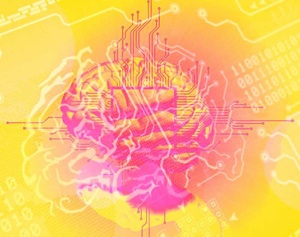Disclaimer
Whilst some care has been taken to check externally linked websites no responsibility is offered nor implied for the suitability, legality or reliability of content therein.

Disclaimer
Whilst some care has been taken to check externally linked websites no responsibility is offered nor implied for the suitability, legality or reliability of content therein.
In The Summer Of ’76 Having sat my O’Levels, I was waiting for my results. A friend’s Dad was a lecturer at Birmingham University and had decided that something new was going to replace programmable calculators and it was worth us getting to know. He hired a room in Stratford and we tinkered with this thunking great circuit-board.
However this new board (left) could make decisions, and make them at lightening speed and you could change the behaviour. It had a language in which you could tell is how to behave and do calculations. All very simply but very fast and most importantly iteratively. Wow. I’d been made for this. My best friend and I begged money from our parents and we sent off for an Ohio Superboard. We were the canniest on the street: we could make LED’s flash ! (even though LEDs back in the day were exceedingly dim).
Motorola Evaluation Kit 6800D2
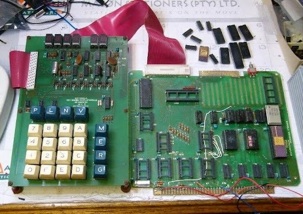
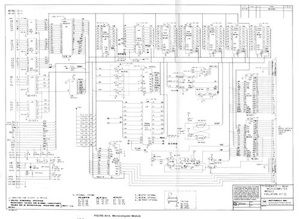
Its complete circuit diagram !
Romance put to one side I decided to visit all 5 universities that I’d put on my UCCA Form. I sat numerous intelligence and aptitude tests and got sponsored on a thin sandwich course of Electronic & Control Systems Engineering at Bradford University. Money flowed in and I got offers of great go-ahead jobs in space and defense. Only it wasn’t defence it was the killing people industry and I wasn’t going to use my knowledge to do that. End of story. I left and spent 3½ glorious years designing fine supervisory, control and data acquisition systems (known as SCADA at the time) in Leamington Spa then Coventry.
Started Young..
Since the age of 6 I had tinkered and this starting point was recounted by my mother regularly at family gatherings as she claimed one evening to have grabbed me out of the air as I managed to unscrew a mains socket on the wall and try to screw new wires to the innards ! She was shocked in one way and I in another but the experience only served to spur me to find better ways to wire up Meccano electric motors.
My Dad bought me Veroboard, a soldering iron and a tiny transformer that I was forbidden to dismantle. Although I was regularly reminded I never looked back. My maternal grandfather had gained one of the first City & Guilds qualifications in radio. When visiting I took great care to break into his garage and dismantle his poor suffering radios to find out how they worked. I even discovered that loudspeakers could behave like microphones given enough oomph (amplification). Over the years I devised various control systems but my inventions were sequential. Turning this does that; bumping into something does something else and flashes a light.
Of course I had the normal teenage male preoccupation with girls and speed. To any normal teenager the two interests were about driving at speed to impress the girl in question but I was seriously jolted when one mother put it straight to me: “You are never seeing my daughter again whilst I hear of you riding a motorbike” (pity because she went on to become a model).
This fervent mind didn’t give up. I don’t know why but I decided that the solution was that I could impress a girl if my car could control itself. Well that was wildly beyond the tech of the day but having frequently roved through a huge local scrapyard for parts for my inventions I noticed that all the best cars had vast amounts of wiring in. This seemed wasteful and unreliable so one idea that occurred to me was that if a digital waveform was superimposed on the car’s DC power supply one could ‘address’ every single component in the car without having to run separate wires everywhere. There’d be two cycles: a read of switches and gauges and a write cycle to control the devices as a result. A master arbitrator would be needed to route all this data from one place eg a fuel sensor, scale it and send it to the driver’s fuel gauge. Other values like indicator blink rates or heater fan speeds would need to be set. I tried a few ideas and discovered that a separate wire was needed for the data because electrical noise, from motors etc, on the wiring bombed data reception at the master controller. The whole idea was feasible but I’d got a love life and time was pressing.
When I first got to see long distance networks it was for point to point data transfers in the oil industry, radio links in the water industry, multiproduct pipelines overseas and local area networks in offices. These were all privately company owned. I never foresaw a truly public wide area network like the internet. I have a good friend Peter Berners-Lee who’s older brother is credited with formalising the development of it but really it had come about as a result of the need for American universities to share knowledge, US military coordination, US census data and then commercial requirements. Tim was far sighted and still is today. He foresaw the big search engines like Google and those areas that Google denies it knows about (although we all know that they know googleplexes more than they let on) viz the dark net.
Back in the day, 1982, I had designed fibre optic comms for Burmah Oil. Early in my experience of the internet I saw some incredibly clever viruses (eg Youtube:Cascade Virus). However, as inconvenient as seeing all your letters from your screen fall into a pile at the bottom I reckoned that viruses would be here to stay, some prevention methods might work, but ultimately controlling hardware by internet communications was too risky. At the moment I’m wrong because Firewalls and anti-virus software updates are keeping the baddies out but dumb hardware cannot yet do the latter.
Eventually I moved to London for good reasons but that’s another story (bottom of this page here)
Please return to the top..
At one point I predicted that viruses would see the end of IoT but private networks protected by Firewalls seem to be doing the trick at the moment (although the Western attacks on the Iranian nuclear centrifuges certainly cast doubt if invaders are determined enough). The Internet Of Things is now a $T industry. Not only can Alexa play your favourite pop song but she can close the curtains, turn down the lights and put out sweet nothings for the cat.
If you want to know more about IoT then the obvious places are out there on the internet of knowledge: Wiki: IoT, or XX
IoT Scepticism To One Side - It Is Alive And Working
A Common Language Allows Networks To Join To Networks
My Place In The Control World
Currently I have one project that is installed and working: Rainwater Pump Control System & Monitoring
My View: From A Weak Start It’s Going To Get Better
There’s A Lot In A Name
If you’re interested in how very early I was in this market see below. I’m not sure that that qualifies me for an opinion but I’m going to offer it anyway. Firstly I never liked the name (and some prominent others agree with me). The IoT is not a communications network - it our well trod World Wide Wait but the fact that it uses the word internet makes it sellable. It also isn’t the ‘things’ - it connects to the ‘things’ via a tiny circuitboard with a very tiny number of inputs or outputs. The devices are purely interfaces between simple hardware (almost exclusively digital) and the infamous Internet Protocol (192.168.blaa.blaa). I could throw in name suggestions like Digital Widgets, Comm Copters or even BagPipes but the name IoT is here now and not going to go away. Conversely I do like the phrase BlueTooth as it doesn’t make itself out to be anything that it’s not.
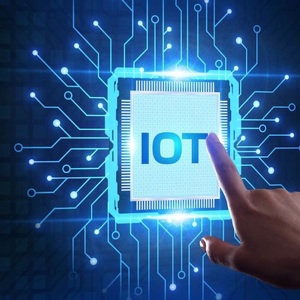
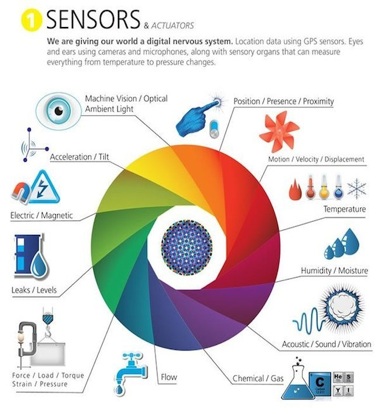

Internet Of Things

There Are Risks
If you had read below you would see that one of my main concerns about small clever, serially connected devices, that have tiny amounts of processing power, is their inherent inability to act defensively to anything that isn’t purely what they’re expecting. They are naïve understandably. Articles by TechNative (London) expound this far further than I want to.
The commercial enthusiasm to install IoT devices in secure or personal areas raised such alarm bells that back in 2018 the Thales Group suggested a Code Of Practice to encourage manufacturers to address the inherent weaknesses and surprisingly quickly the UK Government issued one that very year: British Code Of Practice For Consumer IoT Security
A Lot Of Sense
Before such a bout of sense there had already come a bout of sensors from early adopters like:
Snack and beverage dispensing machine manufacturers (Coca Cola were the first in 1982), Buildings aircon and security management installers, Traffic movement monitoring, Traffic signal suppliers, Utility suppliers (we all know what a fiasco the early electric smart meters were), Airlines on the ground, Airlines in the air, Bicycle hire companies, Farm installations and machinery, Medical equipment suppliers, Old people’s home monitoring and communications and lately Home automation (in 2020 22% of Amercian homes used Amazon Alexa or Google Home)..
This list barely scratches the surface. The world is inexorably heading towards IoT in everything. Is that good ?
Good or not it’s happening. Personally I think that there’s going to be some amazing fiascos. I’m not going to be such a doom and gloom merchant as to say that there’ll be deaths but certainly it doesn’t take much imagination to see that it would be quite easy for little playful people to wreak havoc at the touch of a few of their favourite little buttons.
However that was said about internet banking and it seems to be universally adopted by all the banks now.
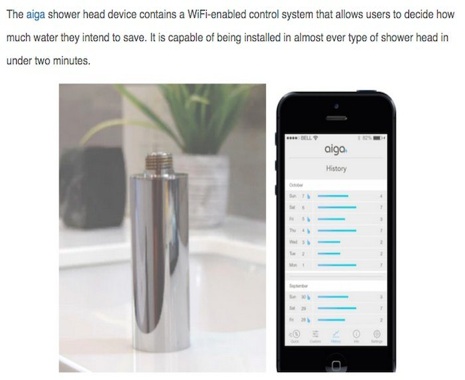
But that’s not going the whole way. For instance shower manufacturer Whirlpool are tantalising interest with ways that IoT could transform your bathroom experience in the future:
•Smart showers will be able to tell who you are and automatically set the temperature, power, and duration of the shower you like without pressing a single button.
•Water-saving sensor technology will be able to detect your presence and thus avoid wasting any water which isn’t used for washing.
•Smart mirrors will be able to detect who you are, then – as you’re getting ready for the day – show you the latest news, weather, and even using Augmented Reality to offer clothing choices.
•A futuristic IoT whirlpool bathtub will know the perfect temperature to set your bath, the specific setting you like for your air-jets, and even your favourite song. Now that’s what we call making the most of technology!
More Sense Than Sense
But it won’t stop there. I thought what will never get IoT’d ? Ah yes, my humble bathroom shower I thought ? Wrong ! Currently Aiga have just what you’ve always wanted: a shower that you adjust with your teenage thumbs !
So now you just know that you’ve not got to get for Christmas.. .. I’ll leave everything to your fertile imagination. And yes sex aids are already ‘out’ there if that’s the right term of phrase ?
